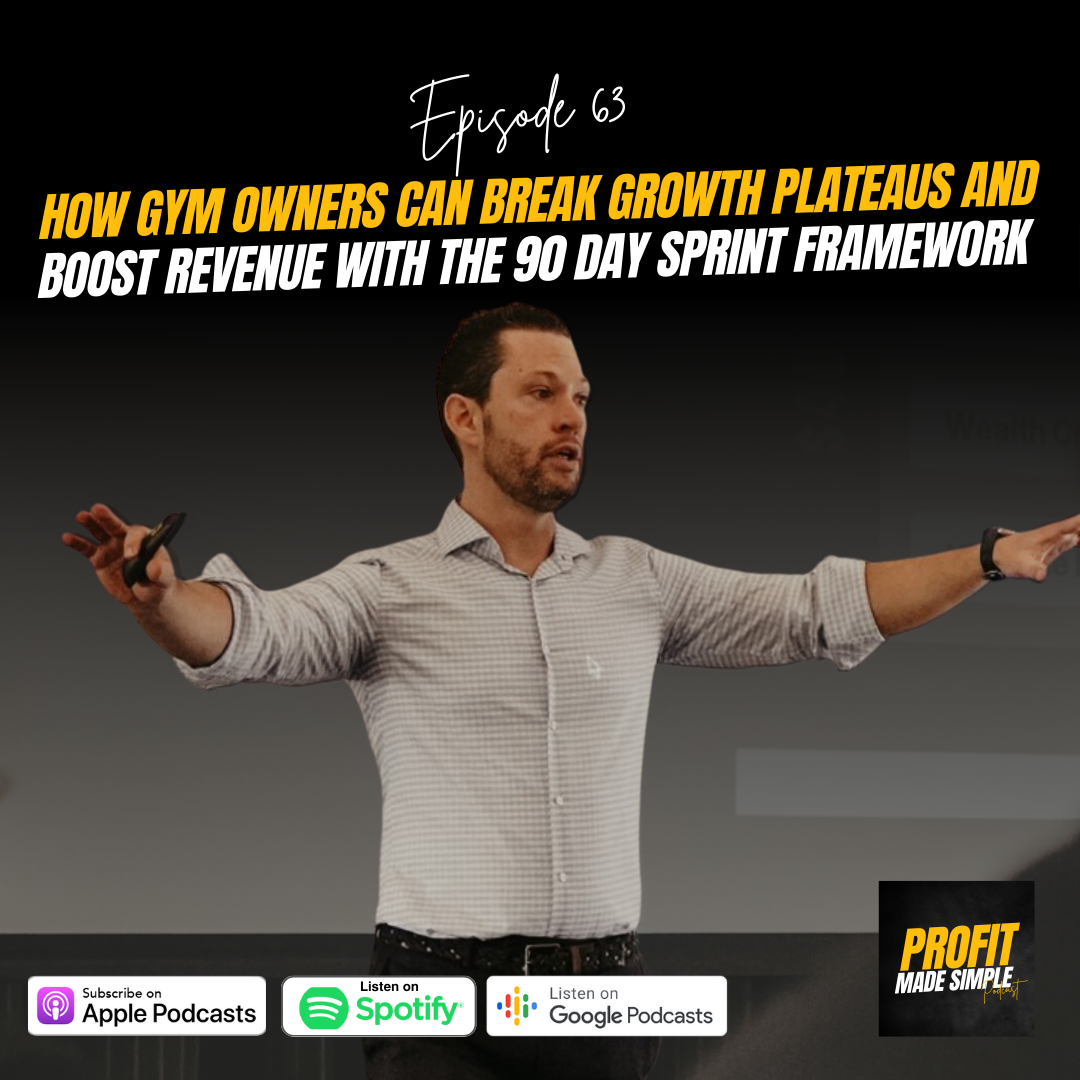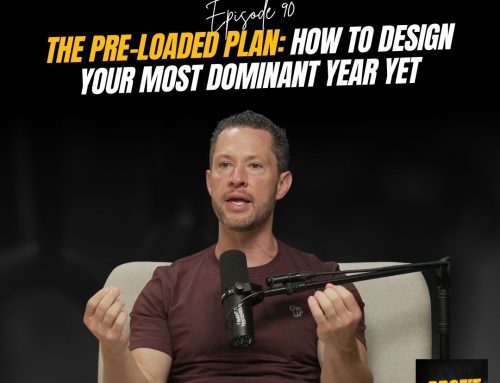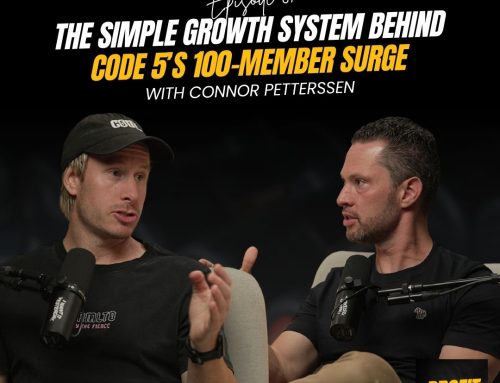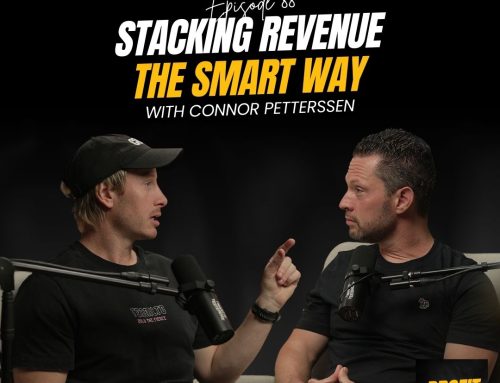Feeling Stuck in Your Fitness Business? Are you working hard, staying committed, and showing up every day—yet still feeling stuck? Like you’re running in place, living the same day over and over again?
If this sounds familiar, you’re not alone. In this solo episode of Profit Made Simple, we unveil a game-changing strategy: the 90-day sprint.
This framework will help you reset, refocus, and build momentum—fast.
1. Why 90 Days Beats Annual Goals Every Time
Annual goals sound good in theory, but they’re too far away to create urgency. Instead, we use the 90-day sprint, leveraging Parkinson’s Law: work expands to fill the time available. Ninety days is the sweet spot—it’s long enough to create real transformation, but short enough to stay laser-focused.
2. The Power of Reverse Engineering
Before diving into your 90-day sprint, start with the end in mind:
- 3-Year Vision: What does success look like in 3 years?
- 1-Year Goals: What are your measurable targets in 12 months?
Once those are defined, we reverse-engineer your 90-day plan. You’ll bridge the gap between long-term vision and short-term action.
3. The 9 Planning Categories to Consider
When mapping your 3-year and 1-year goals, evaluate the following:
- Revenue
- Net profit
- Total clients served
- Team members and roles
- Products and services offered
- Your role in the business
- Physical space and infrastructure
- Passion projects (e.g., podcasts, books)
- Charitable causes and giving back
These categories ensure your sprint aligns with both business outcomes and personal fulfillment.
4. Choosing the Right Projects
Here’s where many fitness business owners go wrong: they try to do too much. Overwhelm sets in, and nothing gets completed.
Instead, choose 2–5 high-leverage projects. Focus on what will move the needle in growth, freedom, or fulfillment.
- Common projects include:
- Launching a new service or program
- Running a high-converting marketing campaign
- Hiring and onboarding key team members
- Building new systems for automation and scalability
5. Break Projects into Sequential Action Steps
Once you choose your projects, reverse-engineer them. Break each one into 6–7 logical, ordered tasks. Assign each step a deadline to avoid procrastination and harness Parkinson’s Law to your advantage.
For example: launching a Signature System might include learning, surveying clients, drafting, naming phases, seeking feedback, and hiring a graphic designer.
6. Weekly Micro Deadlines Keep You on Track
Your 90-day macro deadline is powerful—but micro deadlines are essential. Each task must be assigned a weekly due date. This creates clarity, structure, and momentum. You now know exactly what needs to happen each week.
7. Set 30 and 60-Day Milestones
To avoid overwhelm and ensure you’re on track, split your sprint into three check-in points:
- Day 30 Check-In: Review revenue, leads, and retention
- Day 60 Check-In: Compare progress with mid-point targets
This creates micro-wins and keeps the fire burning.
8. Identify Your Resources and Delegation Plan
You can’t do this alone—nor should you. Identify who and what you need:
- Team members to own parts of projects
- Contractors (e.g. graphic designers, videographers)
- Coaches or mentors to provide expert guidance
This is the time to step into leadership and stop trying to wear every hat.
9. Lock In a Celebration
Business should include joy. Set a date to celebrate completing your sprint:
- A team dinner
- A weekend away
-
A glass of wine and a moment of reflection
Celebration provides closure and motivation for the next sprint.
Final Thoughts: Momentum Is Manufactured
This isn’t theory. I’ve used this exact framework to build multiple seven-figure fitness businesses—and our clients are doing the same. It works because it’s simple, focused, and structured.
If you’re ready to finally escape Groundhog Day and create unstoppable momentum, grab a whiteboard and map out your sprint. Or even better—reach out and I’ll send you our 90-day sprint template so you can crush the next quarter.
The next 90 days could change everything—if you plan with purpose.







Leave A Comment